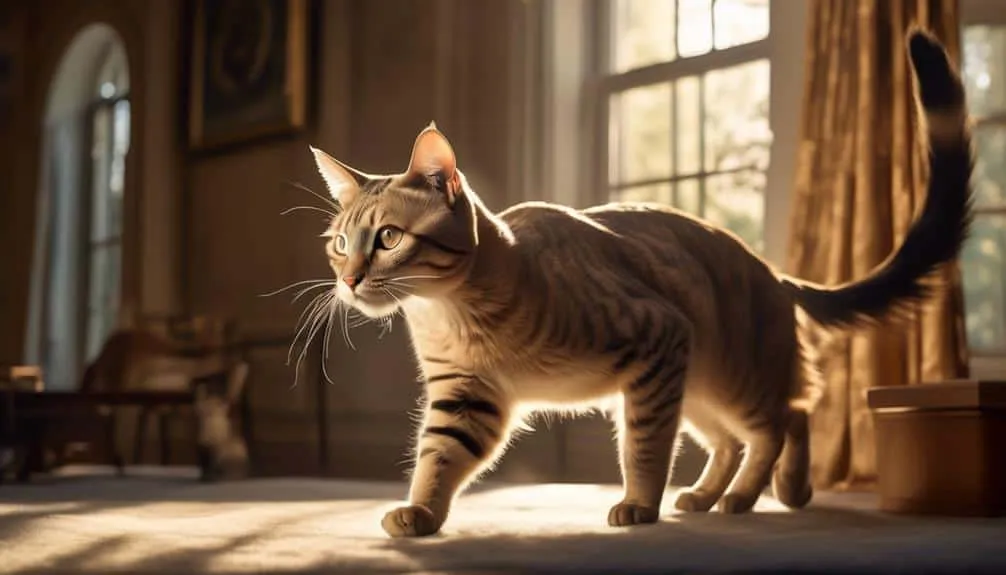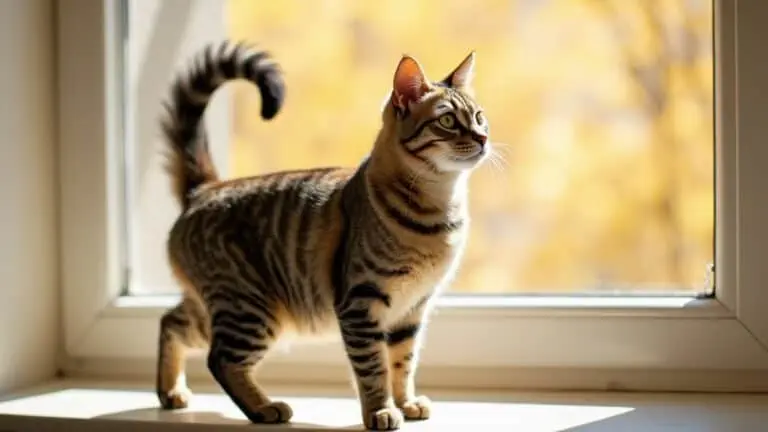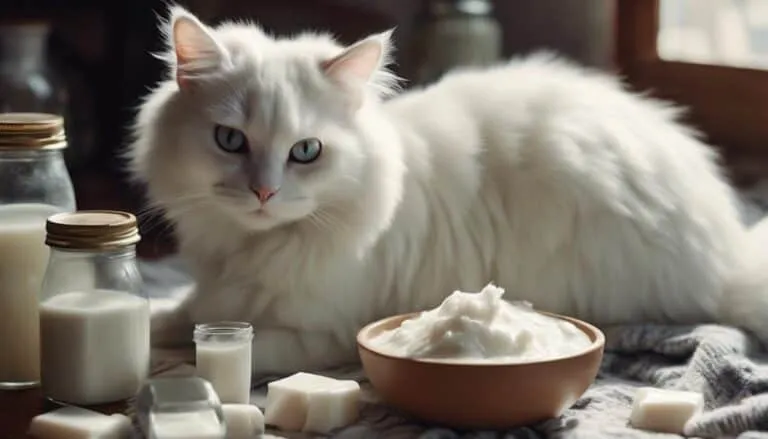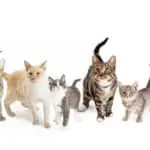The Best Fluffy Pancakes recipe you will fall in love with. Full of tips and tricks to help you make the best pancakes.

Have you ever wondered why your cat flops down in front of you for no apparent reason? It's a behavior that seems to come out of nowhere, leaving you curious and intrigued.
But fear not, for there are secrets behind this mysterious flopping behavior that we are about to uncover. From seeking your attention to marking their territory, there are various reasons behind this intriguing feline act.
So, prepare to uncover the hidden messages your cat is trying to convey as we delve into the fascinating world of cats' flopping behavior.
Key Takeaways
- Cats' flopping behavior is a form of communication and provides insights into their behavior and emotions.
- Misinterpretations and miscommunication can occur, especially with belly rubs, highlighting the importance of understanding individual communication signals and paying attention to body language and reactions.
- Flopping is a sign of trust and affection and should not be mistaken for submission. It is influenced by factors such as personality, mood, and environment, and should be interpreted in context.
- Strengthening the bond with your cat can be achieved through engaging in interactive play, providing environmental enrichment, using positive reinforcement, and creating a stimulating environment.
Reasons for Cats' Flopping Behavior
Cats flop down for various reasons. This behavior is a form of communication and can provide insights into a cat's behavior and emotions. Understanding cat behavior and body language is crucial in interpreting the reasons behind their flopping behavior.
When a cat flops down in front of you, it may be seeking attention or wanting to mark its territory. It could also be displaying mating behavior, reacting to the effects of catnip, or simply engaging in play. Additionally, cats may flop down to find comfort and relaxation.
Misinterpretations and Miscommunication
Misunderstandings can arise when interpreting cats' flopping behavior, leading to miscommunication between cats and their owners. One common misinterpretation is the belief that a cat's flop is a submissive gesture. However, this isn't always the case. Cats may flop for various reasons, such as seeking attention, marking territory, or simply enjoying a sensation or comfort.
Another source of miscommunication is belly rub confusion. While some cats enjoy belly rubs, others may interpret them as a threat or invasion of personal space. It's important to understand your cat's individual communication signals and preferences. Pay attention to their body language and reactions to determine whether they enjoy belly rubs or not.
Understanding the Meaning and Significance
Understanding the meaning and significance of cats' flopping behavior is crucial for strengthening your bond with your feline companion.
Flopping is a form of communication that cats use to express trust and affection towards their owners.
By exploring feline body language, you can interpret the flopping as a positive sign.
It's important to note that flopping isn't a sign of submission, as some may mistakenly believe. Instead, it's a way for cats to communicate their comfort and relaxation in your presence.
Factors such as the cat's personality, mood, and environment can influence their flopping behavior.
To respond appropriately, pay attention to the context of the flopping and provide your cat with the attention and affection they're seeking.
Factors Influencing the Feline Flop
To better understand the factors influencing the feline flop, it's important to consider the various elements that contribute to this behavior.
Cats' flopping behavior can be influenced by several factors, including miscommunication with belly rubs. Here are three key factors that can influence a cat's decision to flop:
- Comfort and Sensation:
- Cats may flop down to find a comfortable position or to stretch their bodies.
- They may also flop in response to physical sensations, such as feeling relaxed or content.
- Seeking Attention:
- Cats may flop in front of their owners to get attention and affection.
- Flopping can be a way for cats to communicate their desire for interaction and social bonding.
- Playfulness:
- Some cats may flop as part of their playful behavior, inviting their owners to engage in playtime.
- Flopping can be a way for cats to initiate interactive play sessions.
Understanding these factors can help cat owners interpret and respond appropriately to their cats' flopping behavior, ensuring a positive and fulfilling relationship.
Interpreting the Flop in Context
When interpreting a cat's flop behavior, it's important to consider the specific context in which it occurs. Cats communicate through nonverbal cues, and flopping is just one way they express themselves. Misunderstanding signals can lead to miscommunication between cats and humans.
For example, a cat flopping down in front of you may not necessarily be a sign of submission, as is often assumed. It could be a gesture of trust and affection, or simply a request for attention. Different interpretations of the feline flop can also arise due to factors such as the cat's personality, past experiences, and the nature of the relationship between the cat and its owner.
Individual Variation in Flopping Behavior
Consider the unique reasons behind your cat's flopping behavior, as individual variation plays a significant role in their actions. Understanding motivations and recognizing behavioral patterns can help you better interpret your cat's flopping behavior.
Here are three key factors to consider:
- Personality: Just like humans, cats have distinct personalities. Some may flop down to seek attention and affection, while others may do it as a playful behavior. Recognizing your cat's individual personality traits can help you understand their specific motivations for flopping.
- Past experiences: Previous experiences can shape a cat's behavior. For example, a cat that has had positive associations with flopping, such as receiving treats or belly rubs, may be more inclined to flop down in front of you.
- Bond and relationship: The bond between you and your cat can influence their flopping behavior. Cats may flop down as a sign of trust and affection towards their owners. Building a strong bond through positive interactions can encourage this behavior.
Reinforcement and Training Techniques
Understanding how positive reinforcement and clicker training techniques can shape your cat's behavior is crucial for fostering positive interactions and strengthening your bond with them.
Positive reinforcement involves rewarding your cat with treats, praise, or playtime when they exhibit desired behaviors, such as using the litter box or scratching the appropriate surfaces. This technique encourages your cat to repeat these behaviors in order to receive the positive reinforcement.
Clicker training, on the other hand, involves using a clicker to mark the desired behavior, followed by a reward. This method helps to establish clear communication between you and your cat, as they learn to associate the sound of the clicker with a positive outcome.
Strengthening the Bond With Your Cat
To further strengthen your bond with your cat, it's essential to implement techniques that promote positive interactions and reinforce desired behaviors. Here are some effective strategies to consider:
- Engage in interactive play: Playing with your cat using toys that encourage exercise and mental stimulation is a great way to bond with them. Use interactive toys, such as feather wands or puzzle toys, to keep them entertained and engaged.
- Provide environmental enrichment: Create a stimulating environment for your cat by offering scratching posts, climbing trees, and hiding spots. This will allow them to explore, exercise, and satisfy their natural instincts.
- Use positive reinforcement: Reward your cat with treats, praise, or affection when they display desired behaviors, such as using the litter box or coming when called. This will strengthen the bond between you and reinforce their positive actions.
Conclusion
As you continue to observe your cat's mysterious flopping behavior, remember that there's always more to uncover. The secrets behind their actions are like a puzzle waiting to be solved.
By understanding the reasons behind their flopping, interpreting it in context, and strengthening your bond, you can unravel the hidden messages your feline friend is trying to convey.
So, stay curious, observe closely, and let the suspense of decoding your cat's flopping behavior deepen your connection with them.








